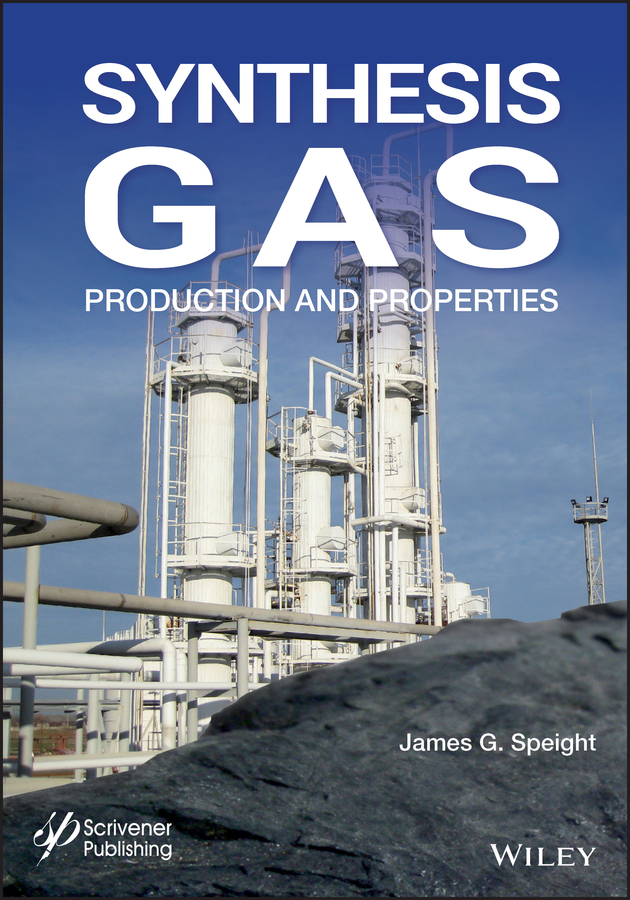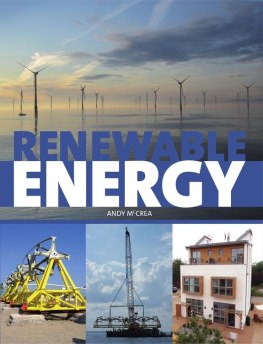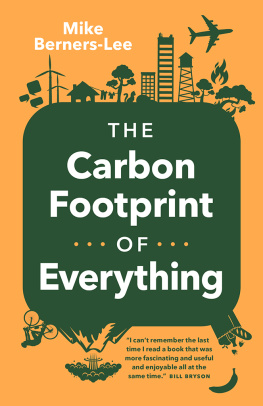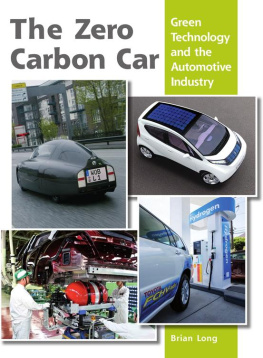
Table of Contents
List of Tables
- Chapter 1
- Chapter 2
- Chapter 3
- Chapter 4
- Chapter 5
- Chapter 6
- Chapter 7
- Chapter 9
- Chapter 10
- Chapter 11
- Chapter 12
- Chapter 13
- Chapter 14
List of Illustrations
- Chapter 1
- Chapter 2
- Chapter 3
- Chapter 5
- Chapter 6
- Chapter 10
- Chapter 11
- Chapter 13
Guide
Pages
Scrivener Publishing
100 Cummings Center, Suite 541J
Beverly, MA 01915-6106
Publishers at Scrivener
Martin Scrivener ()
Phillip Carmical ()
Synthesis Gas
Production and Properties
James G. Speight

This edition first published 2020 by John Wiley & Sons, Inc., 111 River Street, Hoboken, NJ 07030, USA and Scrivener Publishing LLC, 100 Cummings Center, Suite 541J, Beverly, MA 01915, USA
2020 Scrivener Publishing LLC
For more information about Scrivener publications please visit www.scrivenerpublishing.com.
All rights reserved. No part of this publication may be reproduced, stored in a retrieval system, or transmitted, in any form or by any means, electronic, mechanical, photocopying, recording, or otherwise, except as permitted by law. Advice on how to obtain permission to reuse material from this title is available at http://www.wiley.com/go/permissions.
Wiley Global Headquarters
111 River Street, Hoboken, NJ 07030, USA
For details of our global editorial offices, customer services, and more information about Wiley prod-ucts visit us at www. wiley.com.
Limit of Liability/Disclaimer of Warranty
While the publisher and authors have used their best efforts in preparing this work, they make no representations or warranties with respect to the accuracy or completeness of the contents of this work and specifically disclaim all warranties, including without limitation any implied warranties of merchant-ability or fitness for a particular purpose. No warranty may be created or extended by sales representatives, written sales materials, or promotional statements for this work. The fact that an organization, website, or product is referred to in this work as a citation and/or potential source of further information does not mean that the publisher and authors endorse the information or services the organization, website, or product may provide or recommendations it may make. This work is sold with the understanding that the publisher is not engaged in rendering professional services. The advice and strategies contained herein may not be suitable for your situation. You should consult with a specialist where appropriate. Neither the publisher nor authors shall be liable for any loss of profit or any other commercial damages, including but not limited to special, incidental, consequential, or other damages. Further, readers should be aware that websites listed in this work may have changed or disappeared between when this work was written and when it is read.
Library of Congress Cataloging-in-Publication Data
ISBN 978-1-119-70772-1
Cover image: Oil Refinery - Fotogigi85, Coal Image - Photographer | Dreamstime.com
Cover design by Kris Hackerott
Preface
The projections for the continued use of fossil fuels indicate that there will be at least another five decades of fossil fuel use (especially coal and petroleum) before biomass and other forms of alternate energy take hold. Furthermore, estimations that the era of fossil fuels (petroleum, coal, and natural gas) will be almost over when the cumulative production of the fossil resources reaches 85% of their initial total reserves may or may not have some merit. In fact, the relative scarcity (compared to a few decades ago) of petroleum was real but it seems that the remaining reserves make it likely that there will be an adequate supply of energy for several decades. The environmental issues are very real and require serious and continuous attention.
In preparation for the depletion of fossil fuel resources, gasification can be proposed as a viable and reliable alternative solution for energy recovery from a variety of feedstocks. Gasification processes can accept a variety of feedstocks but the reactor must be selected on the basis of the feedstock properties and behavior in the process, especially when coal, biomass, and various wastes are considered as gasification feedstocks. The focus will be on the production of synthesis gas as an intermediate in the production of the necessary fuels and chemicals.
On the other hand, the gasification process still faces some technical and economic problems, mainly related to the highly heterogeneous nature of unconventional feedstocks such as biomass and municipal solid wastes and the relatively limited number of gasification plants worldwide based on this technology that have continuous operating experience under commercial conditions.
Synthesis gas (syngas) is a fuel gas mixture consisting predominantly of carbon monoxide and hydrogen and is typically a product of a gasification. The gasification process is applicable to many carbonaceous feedstocks including natural gas, petroleum resids, coal, biomass, by reaction of the feedstock with steam (steam reforming), carbon dioxide (dry reforming) or oxygen (partial oxidation). Synthesis gas is a crucial intermediate resource for production of hydrogen, ammonia, methanol, and synthetic hydrocarbon fuels.
It is the purpose of this book to present an overview of the issues related to the production and use of synthesis gas and to present to the reader the means by which the continually evolving synthesis gas technology will play a role in future production of fuels and chemicals.
Dr. James G. Speight
Laramie, Wyoming, USA
Part 1
PRODUCTION
Energy Sources and Energy Supply
1.1 Introduction
The major sources of energy have been, and continue to be, the various fossil fuels of which the major component of the group are (i) natural gas, (ii) crude oil, and (iii) coal with tar sand bitumen and oil shale available in considerable quantities for use on an as-needed basis. However, the Earth contains a finite supply of fossil fuels although there are questions about the real amounts of these fossil fuels remaining. The best current estimates for the longevity of each fossil fuel is estimated from the reserves/production ratio (BP, 2019) which gives an indication (in years) of how long each fossil fuel will last at the current rates of production. Thus, estimates vary from at least 50 years of crude oil at current rates of consumption to 300 years of coal at current rates of consumption with natural gas varying between the two extremes. In addition, the amounts of natural gas and crude oil located in tight sandstone formations and in shale formations has added a recent but exciting twist to the amount of these fossil fuels remaining. Peak energy theory proponents are inclined to discount the tight formations and shale formation as a mere aberration (or a hiccup) in the depletion of these resources while opponents of the peak energy theory take the opposite view and consider tight formations and shale formations as prolonging the longevity of natural gas and crude oil by a substantial time period. In addition, some areas of the Earth are still relatively unexplored or have been poorly analyzed and (using crude oil as the example) knowledge of in-ground resources increases dramatically as an oil reservoir is exploited.
Next page








